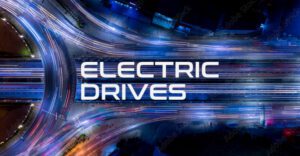- EV charging hardware provider Zaptec has launched its Zaptec Go 2 home charger in the UK, with its vehicle-to-grid (V2G) readiness futureproofing the charger as OEMs and energy firms look towards supporting V2G technology.
- By allowing an EV to send energy from its battery back to the home or energy grid, V2G has the potential to reduce EV costs of ownership further, and allow more drivers to make the switch while reducing grid constraints.
- The Zaptec Go 2 will be offered for both domestic and commercial use, opening the UK’s EV market out to a more flexible energy system.
Zaptec launches V2G-ready charger in UK first
The 22kW charger, which carries Open Charge Point Protocol version 1.6 allowing it to communicate with numerous energy platforms, and has solar-ready integration, is set to be a highly futureproof charging device for both domestic and commercial uses.
As the number of EVs on UK roads grows, the Zaptec Go 2 has the potential to play a broad supporting role thanks to its V2G capabilities. Zaptec envisions its new charger being used not just for private driveways, but also to support fleet domestic charging, and be rolled out on a larger scale by local councils or property developers.
We’re still waiting on many EV manufacturers to support V2G capabilities in their own models, as well as many energy companies, but that time is fast coming. Nissan is set to support V2G technology on ‘selected’ EVs from 2026, whilst Octopus Energy is set to launch a V2G-enabled bundle alongside BYD and Zaptec. By allowing drivers to sell energy back into the grid at times of demand, potentially making EV ownership even more affordable, V2G-enabled chargers such as Zaptec’s new offering could play a key part in widespread EV adoption in the country.
Michael Braybrook, Managing Director UK, Zaptec, commented:
“With Zaptec Go 2, we’re launching more than just a charger. We’re giving people confidence in their EV future. It’s a product designed to meet the needs of drivers today, and tomorrow. It helps homeowners, businesses and public sector partners invest in infrastructure that’s ready to evolve and stay ahead of the curve.”




